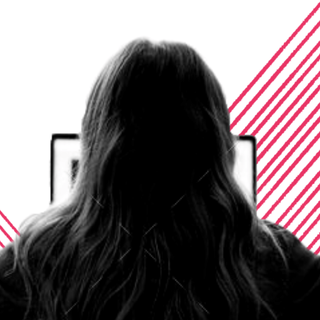Halima Aden is a former Somali supermodel who became the world’s first hijab-wearing model to walk international runways and appear on the cover of Vogue. After four years in the modeling industry, she quit in November 2020, stating her career clashed with her faith, and she had chosen the latter. Now, in an exclusive with the BBC, Aden delineates exactly what transpired in the years before her exit, providing details that don’t bode well for the facade of inclusion so often donned by the fashion and modeling industries.
“I eventually drifted away and got into the confusing grey area of letting the team on-set style my hijab,” Aden tells the BBC, adding how designers increasingly took liberties with her hijab rule, using wrapped jeans and other clothing to cover her head. Over the years, she says the hijab got smaller, and in a few instances, styled to highlight her neck and chest. While this was in keeping with the clause Aden had made her modelling agency, IMG, sign when she first started her career — that they would never make her remove her hijab — she says the rule was interpreted and bent in ways that made her uncomfortable.
She mentions other instances in which she was made to feel fetishized — in one King Kong magazine cover released in September 2019, Aden was styled with a large piece of jewelry on her face, with red and green eyeshadow, which she says made her look “like a white man’s fetishized version of me.” Aden says she felt similarly about other magazine covers she did, in which she “had zero excitement because I couldn’t see myself.” She adds, “Do you know how mentally damaging that can be to somebody? When I’m supposed to feel happy and grateful and I’m supposed to relate, because that’s me, that’s my own picture, but I was so far removed.”
When Aden first joined the modeling industry in 2017, headlines had touted the “first hijab-wearing supermodel” being welcomed with open arms by the fashion and modeling industries. She quickly rose through the ranks, debuting at Kanye West’s autumn/winter 2017 Yeezy collection and widely applauded as the “star” of Milan fashion week that year. Her constant presence on runways and fashion magazine covers then opened the door for other hijab-wearing models to be accepted into the industry, a phenomenon she says she now regrets. Aden says she remembers thinking, “OMG, these girls are following in my footsteps, and I have opened the door to the lion’s mouth.”
Related on The Swaddle:
The Kamala Harris Vogue Cover Shows Fashion Magazines Are Struggling for Relevance
Aden’s account reinforces what is already common knowledge when it comes to the fashion and modeling industries — that they’re white hegemonic spaces that revolve around a narrow European ideal of beauty. These are industries where American casting director James Scully recounts a prominent photographer telling him, “I don’t shoot blacks”; where he says the business has “totally been hijacked by a small group of stylists, casting directors and photographers, who not only seem to dislike women but go out of their way every day to prove that on a daily basis.” Even when diversity is made the agenda, it often translates to horror shows, such as a New York Fashion Week event in which Black model Amy Lefevre was forced to wear racist accessories such as monkey ears and oversized lips. Ultimately, the fashion and modeling industries are where diversity is fetishized, transgender American actress and model Hari Nef says, in which the runway often looks like it’s being walked by clones, completely devoid of diversity.
Aden’s experience shows that these industries may accommodate people who diverge from that ideal, incentivized with the Internet acclaim that follows performing inclusivity. But at the end of the day, the outsider’s identity is what is forced to change, to conform, instead of the other way around.
Aden’s account, and the experiences of Black and Brown models at large, then, show it’s not enough to simply include people who’re different from this white European ideal, but that it’s imperative to welcome them and create spaces that make them comfortable. The fashion and modelling industries might try at the former, but we repeatedly find they’re incapable of accomplishing the latter.




